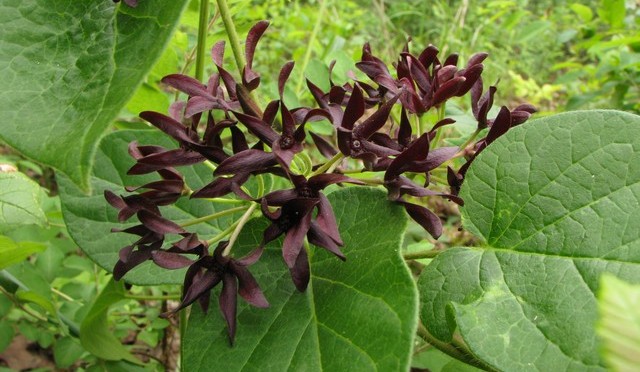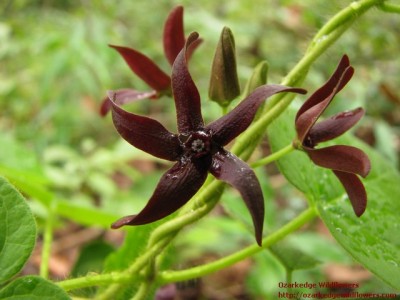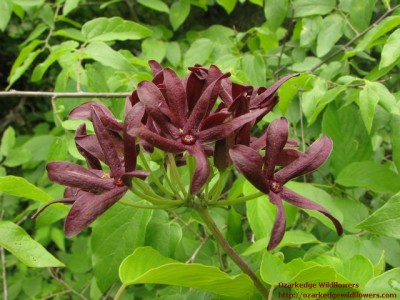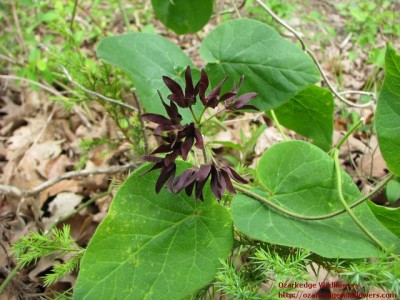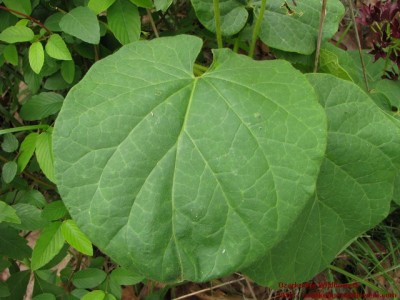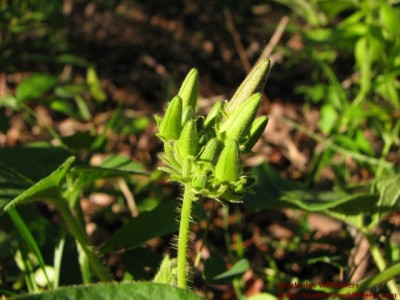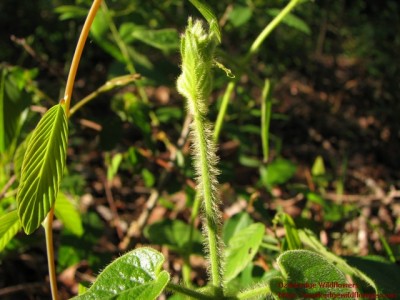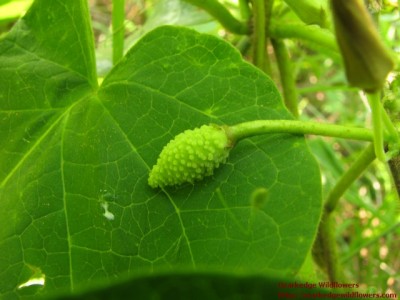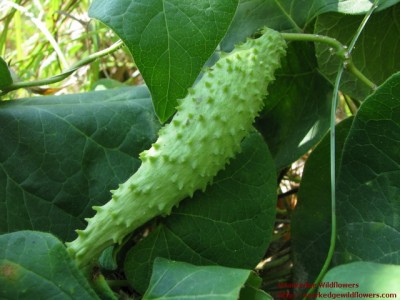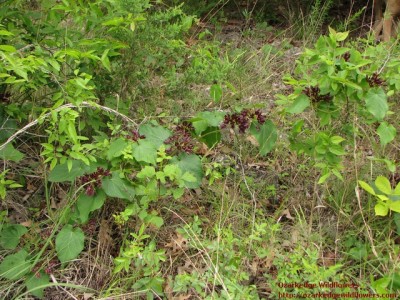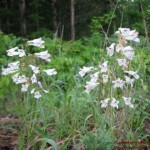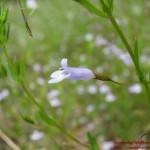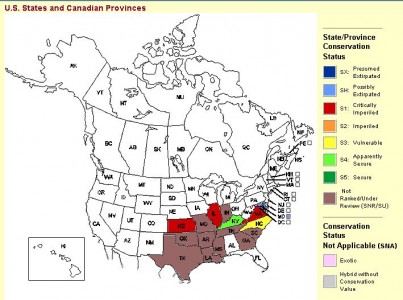Matalea decipiens first caught my eye because of her huge, heart shaped leaves. She was clambering up a young dogwood tree along a woodland trail. The lush green foliage created a tropical feeling with individual leaves that were much larger than my spread out hand. We were well into the Arkansas summer and the blooming period for Matelea decipiens was behind us for the year. I had to wait for the next spring to glimpse the fascinating flowers in their clusters of deep burgundy. This is a plant that is easily overlooked in the wild. The vine is a weak climber, often trailing the ground or becoming tangled in the foliage of low growing vegetation. The burgundy flowers play hide and seek behind the huge leaves and don’t reveal themselves to the casual observer. What a pity it would be to miss them. 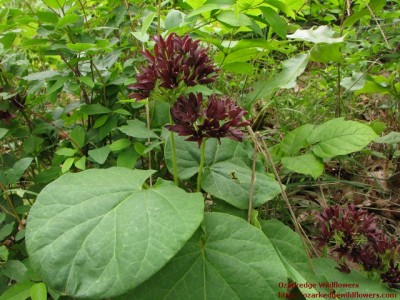
Latin Name/Common Name- I haven’t been able to confidently find the meaning of the name Matelea. I did discover that the Motu tribe in New Guinea used the word to indicate fainting or swooning. Decipiens means catching, trapping, deceiving or cheating. This plant seems just as trustworthy as any other, so I’m not sure how this applies. The common names are pretty straightforward- climbing milkweed and old-field milkweed. Matelea decipiens is in the Asclepiadaceae (Milkweed) family.
Bloom Color- The flower clusters contains many small burgandy flowers. Each flower has five petals that are often slightly twisted like a pinwheel.
Description- Climbing milkweed is a perennial, trailing vine. It is a weak climber and is often seen with stems twisted upon itself, climbing on other flowers, plants or small trees.
The stem is pubescent with long, irregular hairs that are oriented perpendicular to the stem. The leaves are very large, heart-shaped and are pubescent on both sides.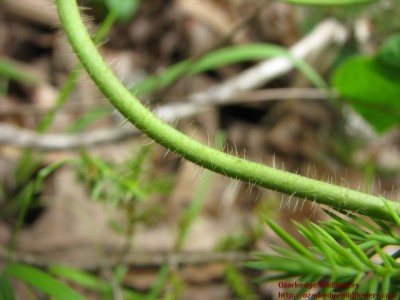
Stem with long, straight hairs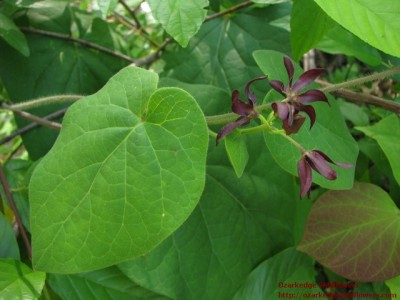
Young leaf tinged with red in lower right corner of picture
Huge, heart shaped leaves
Cluster of buds before flowering
Young stem with fine hairs
The seed pod is quite interesting. It’s large compared to the tiny flowers, lighter green than the leaves and has a spiny appearance and is sometimes referred to as an anglepod. When the sides are ripe it will open and send the typical milkweed silky parachutes floating off in the slightest breeze.
Seed pod nearing maturity
Bloom Time- Matalea decipiens blooms from May into mid June. In good years with ample rainfall, six weeks of flowering can be seen.
Habitat- The preferred habitat is woodland edges and rocky open woods, limestone glades, streambanks.
Matelea decipiens appears to float over low growing vegetation at woodland edge
What’s Growing Nearby?
Matelia decipiens has some friends with overlapping bloom times at the woodland edge. In the picture below you can see the vine twining around Penstiemon pallidus. Delphinium carolinianum and Calamintha arkansana are also found blooming nearby.
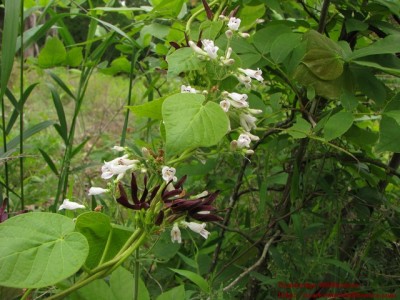 Penstemon pallidus supporting twining stems of Matalea decipiens
Penstemon pallidus supporting twining stems of Matalea decipiens
Endangered List- Matelea decipiens is literally losing ground. It has lost enough habitat to be classified as Endangered in Illinois and Endangered to Extirpated in Maryland per the USDA database. Click here to see the USDA legal status.
Natureserve shows an even more disturbing picture. It is considered Critically Imperiled in 3 states- Kansas, Illinois and Virginia with Vulnerable status in North Carolina. It is either Not Ranked or Under Review in the majority of states within its’ native range. This includes Arkansas. See the map below.
Interesting Tidbits
Stay tuned. My literature and internet searches haven’t turned up much. I think I’ll have to make my own observations this year. I’ve noted that it is associated with butterflies, although I can’t definitively associate it with monarchs or another species in particular.
